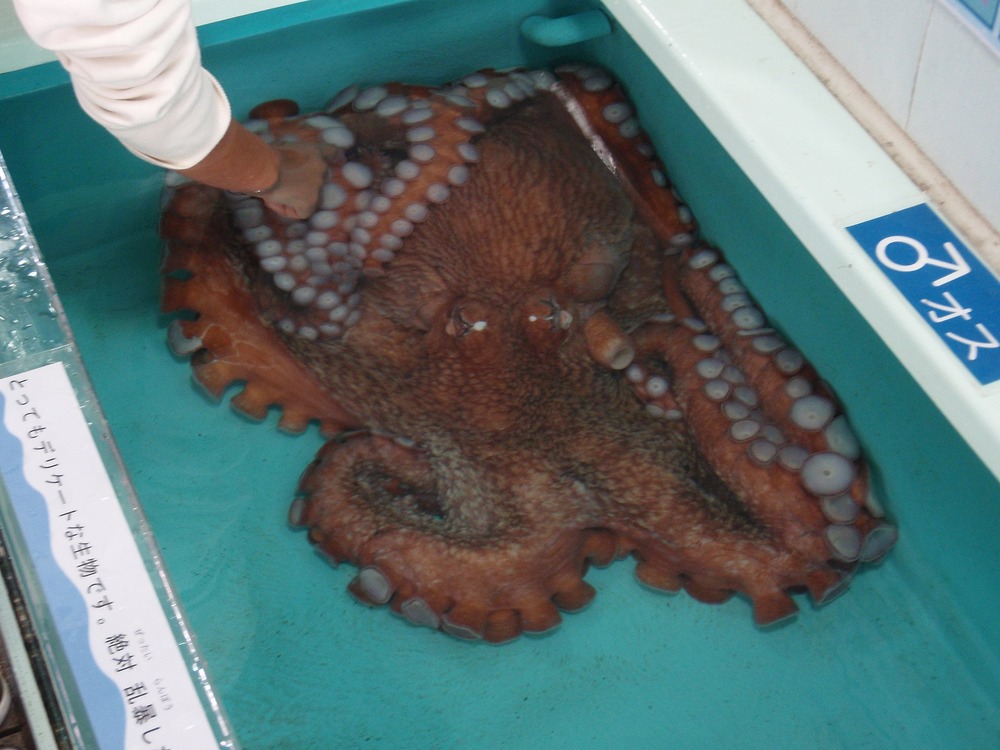mollwollfumble said:
Seashells fossilise well, so i thought I look up just when the earliest known fossils from each mollusk family were.
The result is two bar charts, one for gastropods and one for bivalves. I’ve used the common name rather than scientific name for each family. So you can look up “olive” or “tun” or “volute” etc without worrying about declension of the gender of the latin names. This data is old. I copied it out of the book “Encyclopedia of Seashells” and plotted it in Excel.
Result. Current extant families go a very long way into the past. Much further back than, for example, dinosaurs. And this is known fossils. The oldest identified fossils of extant mollusk families are of the slit shells. I suspect that that’s not so much because they’re ancestral as because they’re easily identifiable. After that comes the great bivalve radiation.
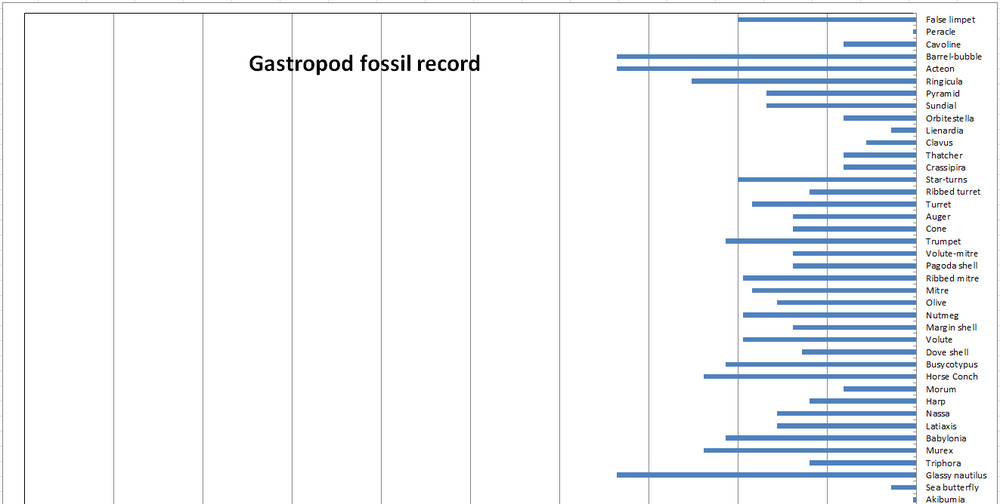
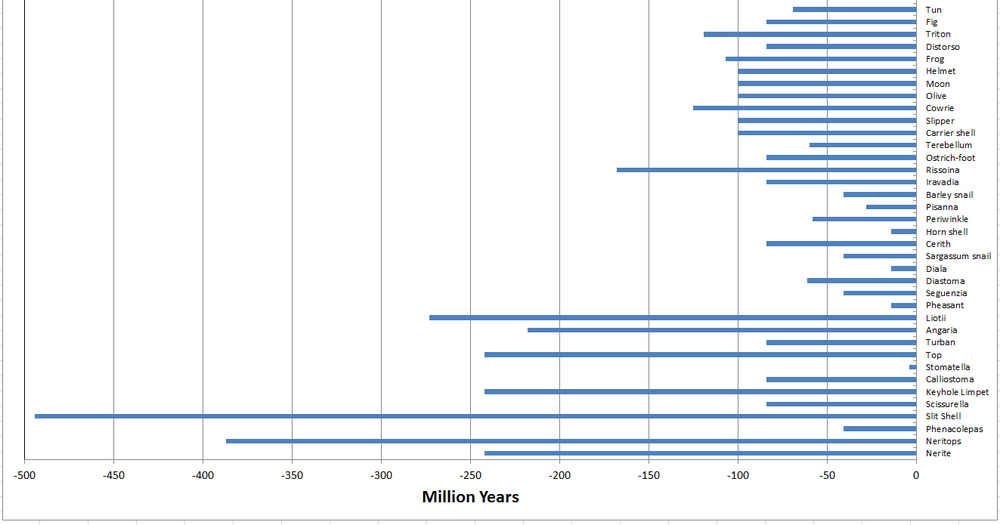
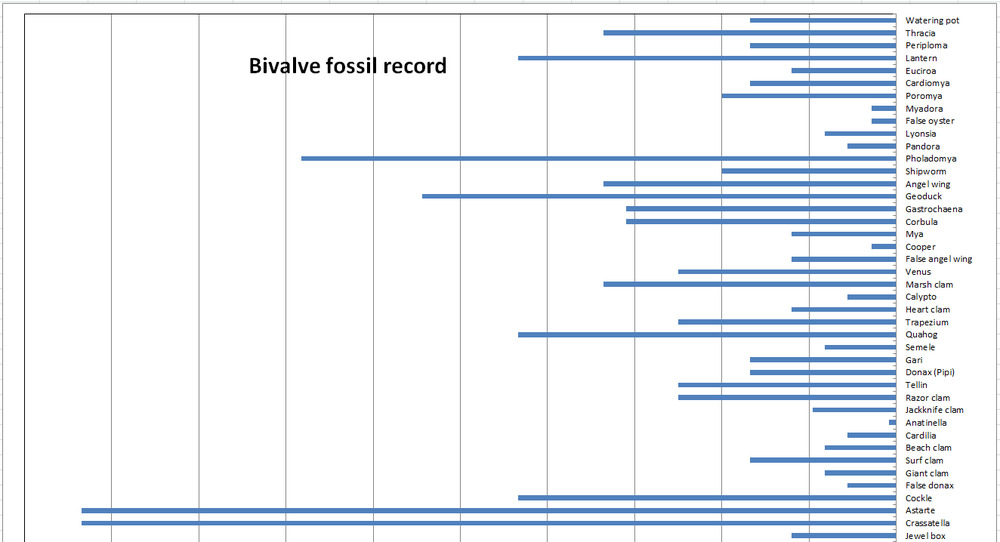
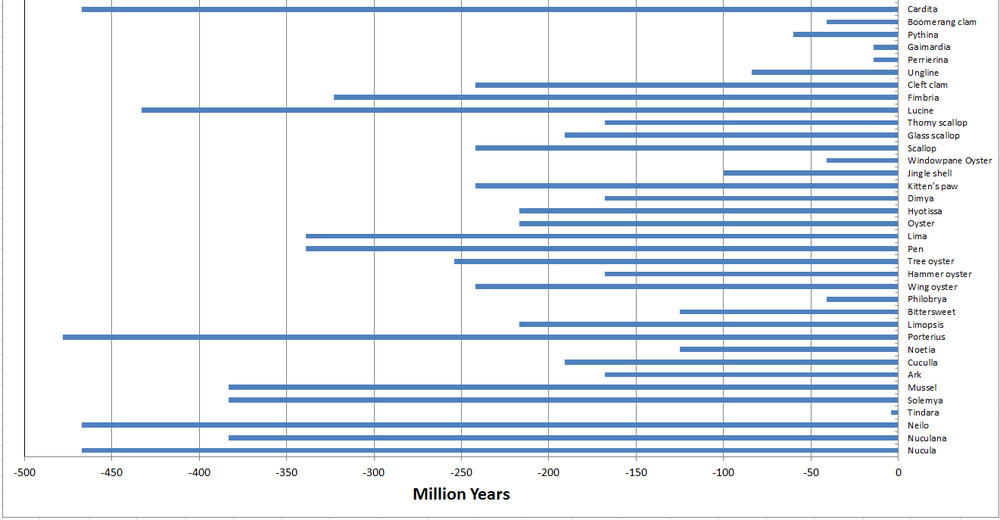
I am surprised that such a complicated mollusc as the Slit Shells are the earliest known fossils, would have thought the bivalves were earlier. Looked up Cephalopods that have existed for around 500 million years too and the octopus ancestors began around 300 million years ago.
The giant Pacific octopus (Enteroctopus dofleini) is often cited as the largest known octopus species. Adults usually weigh around 15 kg (33 lb), with an arm span of up to 4.3 m (14 ft). The largest specimen of this species to be scientifically documented was an animal with a live mass of 71 kg (156.5 lb). Much larger sizes have been claimed for the giant Pacific octopus: one specimen was recorded as 272 kg (600 lb) with an arm span of 9 m (30 ft). A carcass of the seven-arm octopus, Haliphron atlanticus, weighed 61 kg (134 lb) and was estimated to have had a live mass of 75 kg (165 lb). The smallest species is Octopus wolfi, which is around 2.5 cm (1 in) and weighs less than 1 g (0.035 oz).
